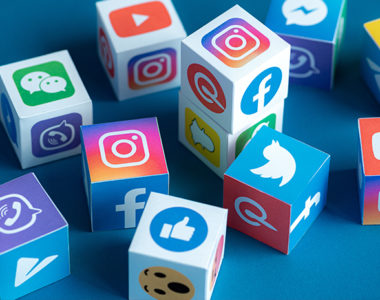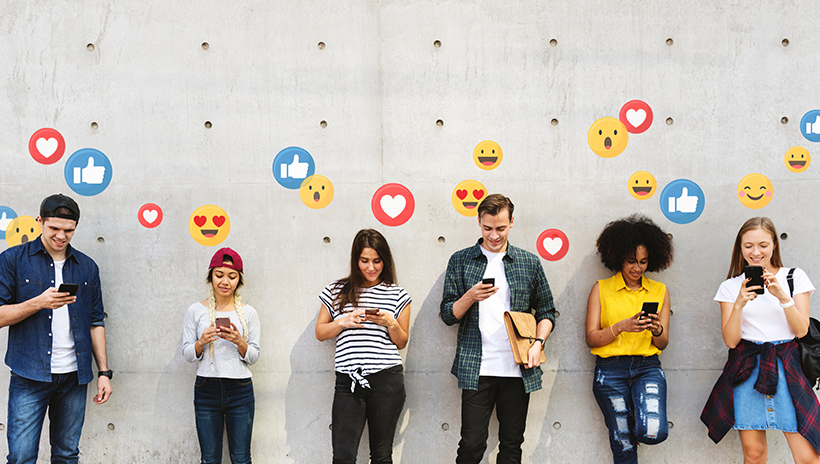Level Up Your Library: Leveraging Social Media to Build a Strong Digital Community Presence

Libraries (via their awesome library workers) are leaders in developing a strong sense of community. Which makes sense, because we’ve had thousands of years to learn how to best connect with our communities. Librarians were even early adopters of the (then) newfangled World Wide Web, cleverly and quickly incorporating the power and potential of the internet into our community-building and resource-facilitating efforts. So, when social media emerged on the scene, many librarians didn’t shy away from joining the fun, foreseeing the potential power a strong social media presence could provide for a library program. Whether it’s Facebook, Twitter, Instagram, TikTok, or any of the other and emerging platforms, you’re sure to find a strong and vibrant librarian and library presence.
The fast-paced and continually changing social media landscape can make it all a bit overwhelming, however, and some librarians may struggle to fully capture the full power and potential that a strong social media presence can offer. As a librarian who stumbled into the social media game about six years ago and surprisingly found she was good at it, I’m happy to answer some common questions and offer some advice to help you maximize the reach and impact of your library’s social media accounts!
1. Which Platforms Should You Use?

There isn’t a one-size-fits-all answer to this question. The truth is that there are a lot of social media platforms to choose from, and they all serve slightly different purposes. To figure out which platform/s you should use for your library, you first need to answer the following two questions:
- Who is my intended audience?
- What is my intended purpose?
The audience matters a lot because different social media platforms are popular with different demographics, especially age group. Since I am a high school librarian, my intended audience is mostly young adults and their families. I also like to target our community in general, because I think it’s a great idea for the community to be able to see what a strong library program looks like, and for them to feel like they are a part of it. Knowing that these were my intended audience groups, I did some research on the different platforms and determined that Instagram and Tiktok were best suited to my needs. Instagram is very popular with teenagers and young adults. It is also increasingly popular with millennials and Gen X, which is the age group many of my students’ parents fall into. Instagram has also become popular with professionals and businesses, so there is a strong presence of other community members on Instagram too, and our local professionals and business owners very much enjoy following our library account and getting insight into what’s happening in their local school. Depending on your intended audience, other social platforms might make more sense for your library. For example, if you are a public library whose intended audience are older than their 30s, you might have more success utilizing Facebook or Twitter, because those audiences are still using those platforms.
Your purpose also matters in choosing your platforms, so it’s important to do some research on the strengths and weaknesses of each platform before you decide which ones to direct your time and effort toward. If your purpose is to update your community on practical things, then Facebook and Instagram work really well. If your purpose is to connect with other librarians and learn from each other, then Twitter can be a great choice. If your purpose is to show off your library’s resources and impact, then Instagram and TikTok make great choices. And, to be completely honest, a multiplatform approach works best, so I recommend having a couple social platforms for your library. You can, and should, reuse content across platforms (there’s no need for each platform to have completely original content every day), so running multiple accounts is not much more work than running one account. Your reach will be better if you use multiple platforms and cross promote.
Pro Tip: For branding purposes and consistency, I actually recommend that you set up an account for your library on each platform as soon as it starts gaining traction, so you can try to snag the same account name/handle across the board. Even if you are not sure you’re going to use the platform, it’s not a bad idea to grab your library’s name while it’s still available. If you aren’t going to actively use it for the time being, you can just put a message in the bio and make a post saying, “This account is inactive at this time, please find us on X instead,” and redirect people to your active socials. Do you have any idea how many high schools use the acronym GVHS? A lot! I’m always in a race to get the handle @gvhslibrary on each social I can before someone else snaps it up!
2. How Do I Get My Community to Follow Me?

This is one of the most common questions I get asked because many of us have created library social media accounts and then struggled to get people to actually follow and engage with the account. There is a lot that goes into convincing people to follow you, but in general, just like with everything libraries do, you have to identify your community’s actual needs and make sure your content meets those needs. One of the biggest mistakes I see librarians make on their socials is to only post information and things that are of interest or relevance to the librarian, or which the librarian thinks is important, instead of what is of interest and relevance to the librarian’s audience. Of course you want to use these platforms to promote your resources, services, and programs. You want to post tutorials about how to use your online databases, access eBooks, sign up for summer reading, book 1:1 research help sessions, etc. Of course you do! Your library has tons of amazing offerings and you want to advertise them! And you definitely should.
But that, unfortunately, needs to only comprise about 10% of what you post. The other 90% needs to be more generally relatable, enjoyable, or intriguing content. The sad fact is that most of your community is not going to follow a library social media account if the only things posted on the account relate explicitly to booktalks, resource tutorials, or advertisements. I’m sorry to be the bearer of bad news, but that just isn’t that interesting to most people. Most libraries offer a lot that goes way, WAY beyond just books, and yet I see so many library Instagram accounts that only ever post book-related content. That’s fine if the purpose of your account is to communicate only to avid readers. If the purpose of your account is to build community, establish a dynamic digital community presence, communicate and connect with your community at large (even those who don’t care about books), connect with and learn from other professionals, and/or advocate for the profession, however, posting only pictures of books or database tutorials isn’t going to help you achieve your aims.
Basically, in order to get followers, you kind of have to do a bait and switch. But in a good way! You have to post a bunch of really interesting, relatable, or delightful content so as to convince them to follow you. To “hook” them. Once they are hooked, then you can sneak the important posts in amongst the “fluff” posts. What comprises your “fluff” posts may vary depending on what is most appealing to your audience. Every community is a little bit different, and their needs and interests are going to drive what kind of posts they’re most interested in seeing. Whatever it is that draws them is what you want about 90% of your posts to be about. The other 10% is for you to use for legitimate library stuff promotion such as booktalks, program advertisements, reminders, tutorials, resource promotion, etc.

As an example, my community mostly follows me to see things that make them smile or which help them. Helpful things they love seeing include snow-day announcements and delay bell schedules. Students love knowing they can quickly pull up the library Insta and count on seeing the bell schedule posted there, easy to find. Things that make them smile include positive quotes, hilarious TikToks, and other happy things. It can be anything, and doesn’t need to be fancy. Literally sharing silly cat videos or funny memes can be enough. The number one thing people follow me for, though, is to see tons of pictures of students having fun in the library. During a normal year, when our library is packed with students all day, I usually post multiple photos a day of students in the library reading, learning, crafting, socializing, etc. Those photos are what people follow our account for. Both students and the community love seeing happy kids having fun and learning in the library. It makes them happy to see that, and that makes them want to follow our account. Amidst those photos and other fun things, I sneak in posts about bookstalks, programs, resources, grants we’ve won, lessons I’ve done, media literacy tips, etc. While my community enjoys seeing those posts, they wouldn’t follow me if that was all I posted all the time; I need the fun stuff to keep them hooked.

Other Tips
Consistent Posting
To build a following on any social media platform, you’re going to want to post frequently. Usually a few times per day is what I recommend, and no less than once per day if at all possible.
Repurpose Content
Posting every day might seem overwhelming, but each post does not need to be a masterpiece, original, or even your own content. A simple snap of a display, a picture of a cart full of books, a quick booktalk, and a picture of the full book drop—all of these things take only about 30 seconds to post. You can also share other people’s content, so you don’t actually have to come up with original ideas for content all the time. For example, I follow all of our school’s other socials so I often simply re-share their content on the library Insta. If the Girls’ Soccer team just posted a picture of themselves practicing, I might simply repost their pic and tag them. I follow mental health accounts and often repost their mental health advice posts. When I say “post regularly,” that doesn’t mean it has to be hard or time-consuming!
Hashtags
Find which hashtags relate to your content and are popular, and incorporate them. This is especially important on Instagram and TikTok. Hashtags are only really necessary if you’re trying to build a wider following from the general public or within certain niches. For example, in order to draw more librarian followers on TikTok, you want to use hashtags like #librariansoftiktok and #librarytiktok because those hashtags will help librarians find your account and content.

Promote Your Platforms
People can’t follow you if they don’t know where online to find you. Having a few “follow us” posters around the library is not enough. Put it on everything like bookmarks, bags, uniforms, pins, lanyards, bathroom stalls, displays, etc. Verbally tell people! When kids check out a book, or I’ve just finished delivering a lesson or a booktalk, I’ll say, “By the way, we’re on Instagram and Tiktok, I really hope you can follow me!”
Cheat by Bribing Them
Ok, to be completely honest, I do also bribe my students to follow our socials. But I don’t feel bad about it because I tie it into community building. I tell students that “every time we gain 100 new followers on Instagram we’ll put out a bowl of lollipops!” I do not give each individual follower a lollipop when they follow me. Instead it becomes a community endeavor; those who already follow me try to convince others to follow me because they know that another 100 followers means lollipops for everyone. It is shockingly effective considering I just use Dum Dum lollipops, and anyone could just buy their own bag for about $3.
I truly believe that a strong and dynamic social media presence is one of the most important tools in a library’s advocacy and community-building toolboxes. I think if your library is still ignoring social media, that is to the detriment of your program and you’re missing a major opportunity to connect with your community. One thing COVID has done is shine a light on how important a digital presence is for keeping people connected, and social media provides an excellent and FREE platform for us to continue reaching our communities even when our physical spaces are closed or inaccessible to them. So my advice is for librarians to dive right into the social media game and to devote a significant amount of time to developing that critical digital community presence.